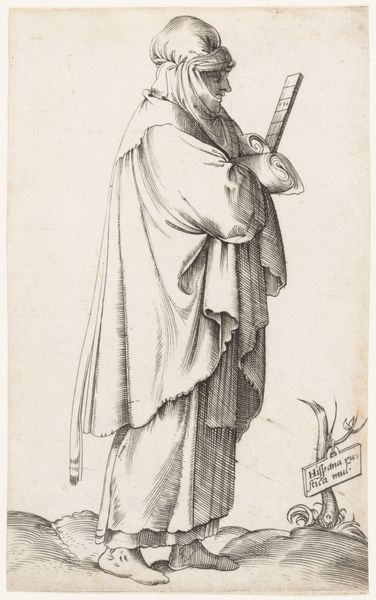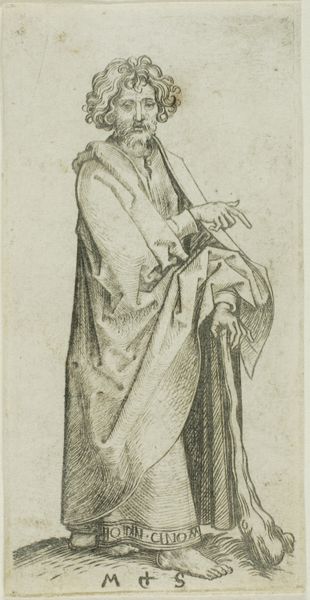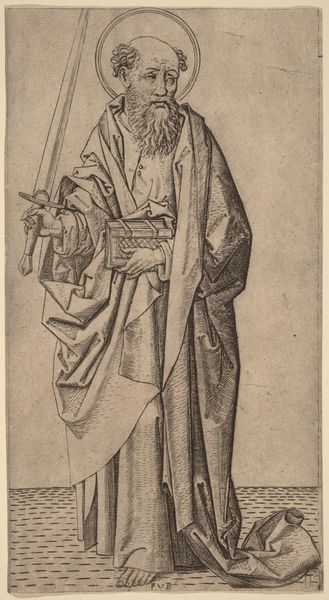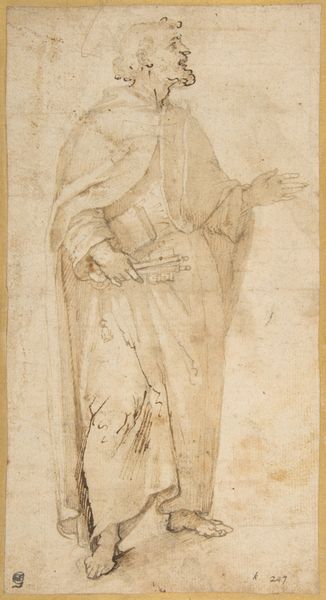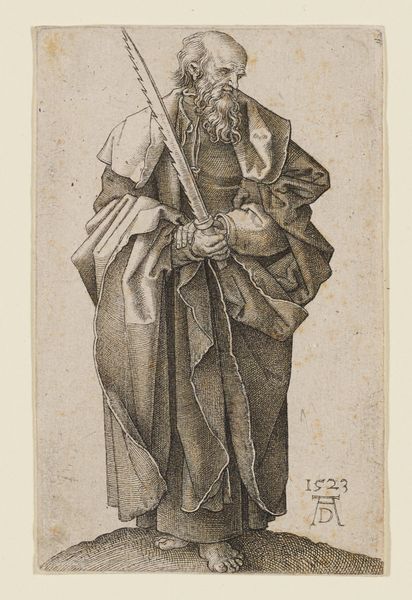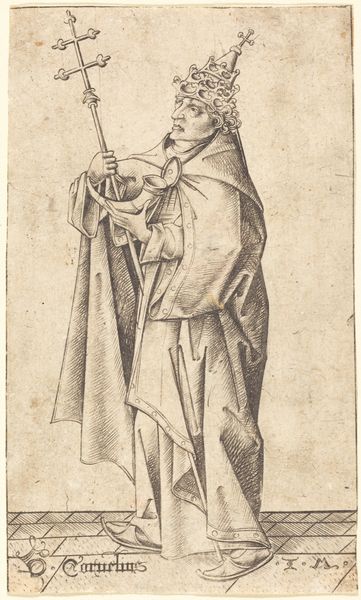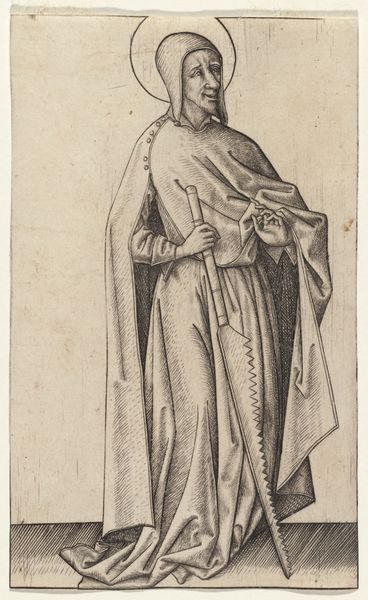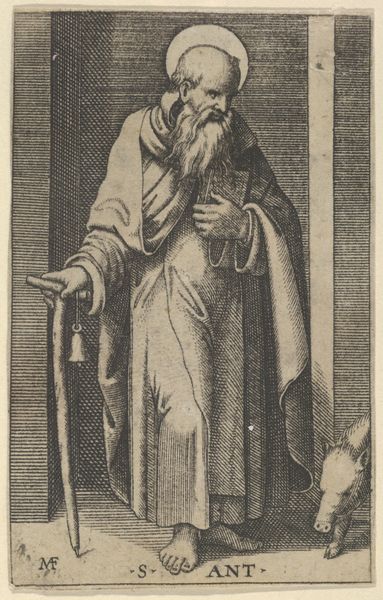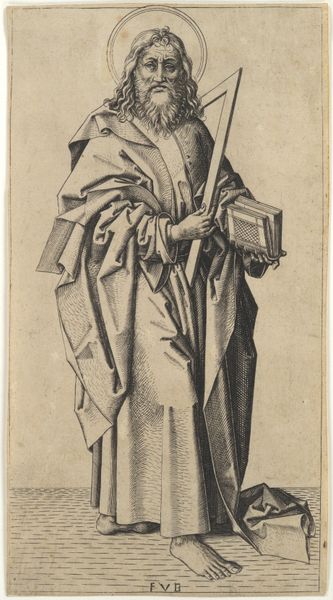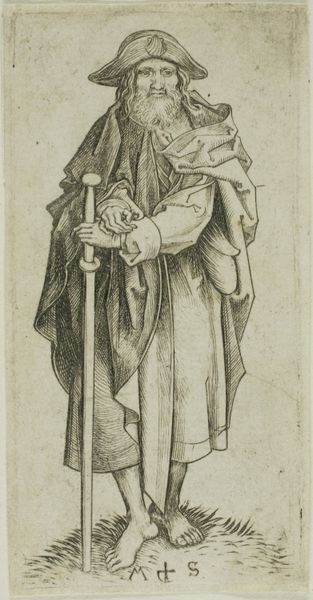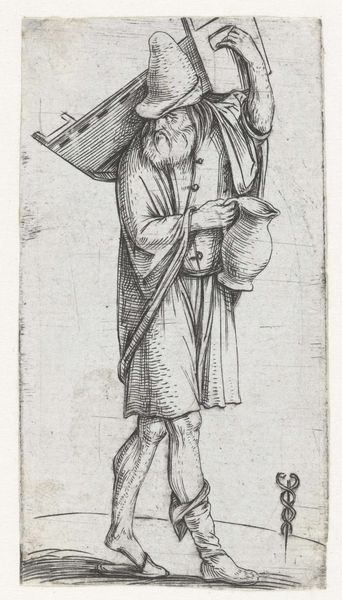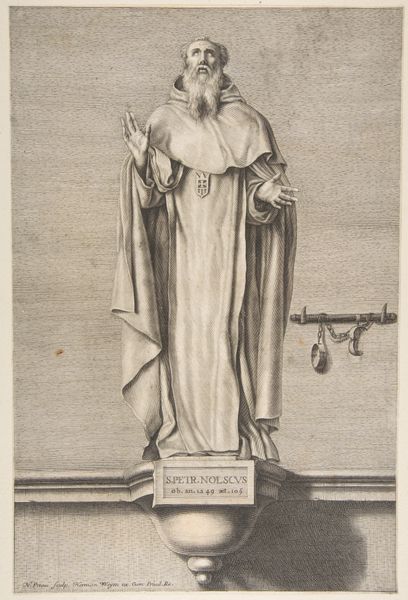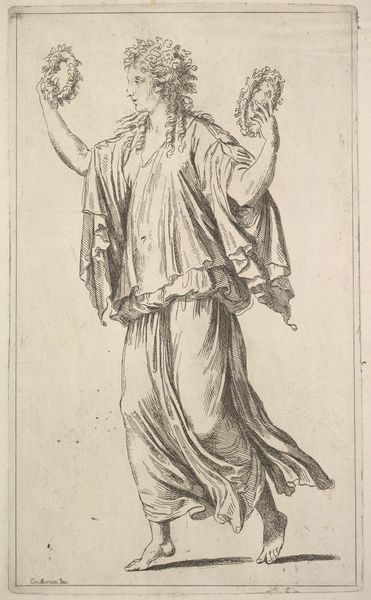
Costume Plate: Hispania Rustica (with laundry on head) 1552 - 1563
0:00
0:00
drawing, print, engraving
#
portrait
#
drawing
# print
#
figuration
#
genre-painting
#
italian-renaissance
#
engraving
Dimensions: sheet: 5 7/8 x 3 11/16 in. (15 x 9.3 cm)
Copyright: Public Domain
Editor: Here we have Enea Vico's engraving, "Costume Plate: Hispania Rustica (with laundry on head)" from sometime between 1552 and 1563. It depicts a woman carrying a large bundle on her head. She looks… burdened, to put it mildly. How do you interpret this work, especially given the title's reference to "Hispania Rustica"? Curator: The title gives us a clear entry point: "Rustic Spain." Vico situates this woman as a representative of rural life, perhaps even peasantry. What's striking to me is the artist's attention to detail in her clothing and posture. How does her garb and stance communicate a particular identity or social standing? Editor: Well, her clothing looks practical, but not fancy. The bundle on her head and her hand on her hip seem to suggest hard work. It makes me think about the labor expected of women in that period. Curator: Exactly. And the directness of her gaze! There’s an assertiveness there, despite her apparent labor. Considering this print was created during the Italian Renaissance, a period marked by both artistic flourishing and strict social hierarchies, how do you think Vico is engaging with prevailing notions of gender, class, and even cultural identity through this portrayal of a Spanish woman? Is this an objective ethnographic study, or is Vico commenting on something more profound about societal expectations and realities? Editor: That’s a lot to consider! It challenges the typical idealized images you often see from that time. Maybe he’s subtly highlighting the burdens placed on women, particularly working-class women, and contrasting them with more privileged women. Curator: Precisely. And think about the power dynamics at play when an Italian artist depicts a Spanish subject. Who gets to tell whose story, and what biases might be embedded within that representation? Editor: I hadn't really thought about it that way. Now I see this not just as a portrait but as a complex statement about labor, identity, and cross-cultural representation. Curator: Exactly. This engraving invites us to reflect on whose voices and experiences are historically privileged and how art can both reinforce and challenge such dynamics.
Comments
No comments
Be the first to comment and join the conversation on the ultimate creative platform.
